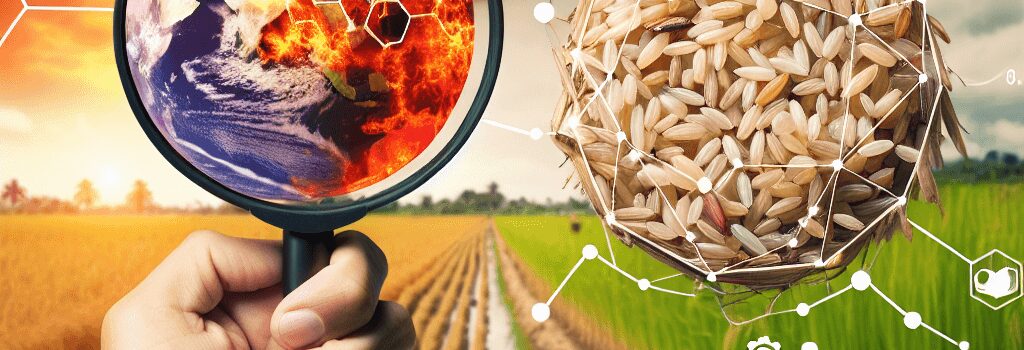Climate Change and the Rising Toxicity of Rice: A Concerning Nexus for Global Food Safety

As global temperatures continue rising and atmospheric carbon dioxide levels surge, new research indicates that the world’s most consumed grain, rice, may become increasingly toxic. In a groundbreaking study published in The Lancet Planetary Health, researchers reveal that higher temperatures and CO2 concentrations could boost the absorption of arsenic—a dangerous, carcinogenic heavy metal—into rice grains, posing serious public health risks for billions of people worldwide.
The Science Behind Arsenic Uptake in Rice
Rice is unique among staple crops primarily because it is grown in waterlogged conditions. Farmers flood rice paddies to suppress unwanted weeds, but this method inadvertently increases the rice plant’s exposure to arsenic present in water and soil. Arsenic occurs both naturally and through industrial contamination, and its inorganic form is especially toxic. This research highlights how the combination of increased atmospheric CO2 and higher ambient temperatures can enhance the biogeochemical processes in the soil, resulting in higher arsenic uptake by rice plants.
Experimental Insights and Technological Details
Over a six-year period, a team of experts from China and the US, led by plant physiologist Lewis Ziska of Columbia University, conducted controlled field trials. The experiment involved subjecting various rice genetics to incremental increases in temperature and CO2 concentrations that align with climate projections. Advanced sensor arrays and climate simulation technologies were employed to monitor micro-climatic conditions, track soil chemistry changes, and quantify arsenic levels in the rice grains.
- CO2 and Temperature Interaction: While previous studies examined the impact of either CO2 or temperature individually, this study integrated both parameters, revealing a synergistic effect that significantly elevates arsenic bioavailability.
- Arsenic Speciation Analysis: Using cutting-edge mass spectrometry techniques, researchers differentiated between organic and inorganic arsenic, confirming that the increase predominantly affects the inorganic, more hazardous form.
- Genetic Variability: The study spanned a wide range of rice genotypes, underscoring that genetic predisposition plays a critical role in arsenic absorption under environmental stresses.
Implications for Global Health and Food Security
For the more than half the global population that relies on rice as a dietary staple, these findings signal a looming public health crisis. Inorganic arsenic exposure is linked to several health issues, including cancers of the skin, bladder, and lungs, as well as cardiovascular diseases and neurological impairments in infants. Based on per capita consumption data from major rice-consuming countries in Asia—such as Vietnam, Indonesia, China, Bangladesh, the Philippines, Myanmar, and India—the study projects a measurable increase in disease risk correlated with arsenic exposure.
Regulatory Challenges and Future Mitigation Strategies
Current regulatory frameworks have yet to adequately address these emerging risks. For instance, the US Food and Drug Administration has not set definitive limits for arsenic in foods. The study’s authors are calling for more rigorous standards to protect vulnerable populations, particularly infants, who tend to consume rice-based products. In the realm of agricultural innovation, scientists are actively exploring several promising approaches:
- Genetic Engineering: Development of rice strains with reduced porous textures that limit arsenic absorption.
- Alternative Cultivation Techniques: Adjusting irrigation regimes and improving soil chemistry to decrease bioavailability of arsenic.
- Consumer Education: Raising awareness about arsenic exposure and promoting dietary diversification to lower reliance on rice.
Deep Dive: The Role of Advanced Technologies in Addressing the Crisis
Technology plays a pivotal role in both understanding and mitigating the issue. Precision agriculture tools, which integrate sensor networks, satellite imaging, and AI-driven analytics, are now being utilized to monitor soil health and predict toxin accumulation. Machine learning models help forecast potential contamination hotspots and optimize water management practices, while emerging biotechnologies aim to tailor-make rice varieties with inherent resistance to arsenic uptake. These technological interventions underscore the commitment across the global scientific community to address the intertwined challenges of climate change and food safety.
Expert Opinions and Moving Forward
Leading experts like Keeve Nachman from Johns Hopkins University emphasize that the phenomenon of rising arsenic toxicity in rice exemplifies one of the tangible impacts of climate change on food quality. “Rice has always been a food where arsenic is an issue, and climate change is making it worse,” Nachman remarked. This sentiment is echoed broadly within the scientific community, urging immediate action through policy update, agricultural research investment, and innovative technological interventions.
Conclusion
As we confront a rapidly changing climate, the increasing toxicity of rice represents a multifaceted challenge that intersects public health, environmental stewardship, and technological innovation. The study not only advances our understanding of the interplay between climate factors and food safety but also acts as a catalyst for regulatory reforms and scientific breakthroughs that aim to safeguard one of humanity’s most critical food resources.
Source: Ars Technica